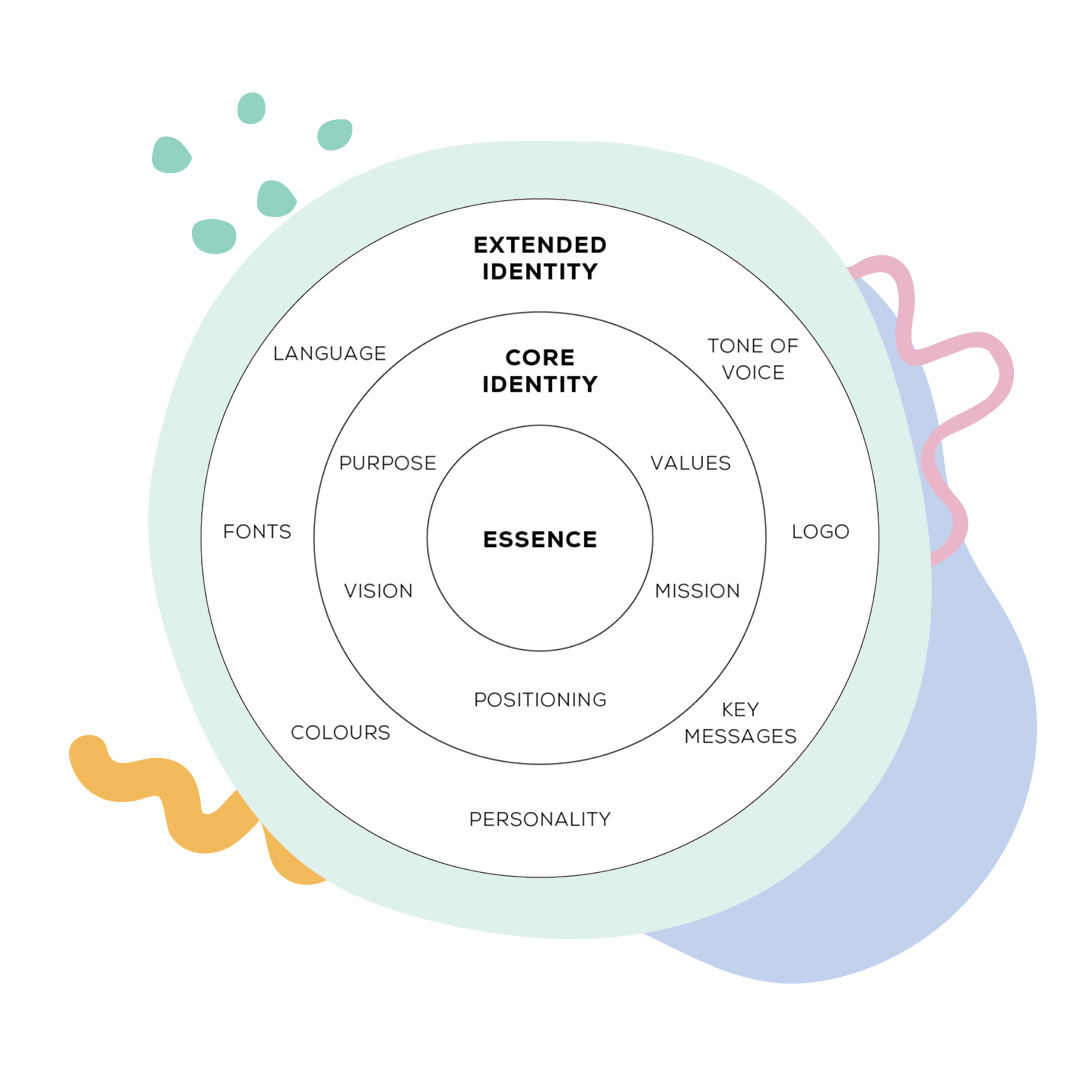BRANDING BOOTCAMP DAY THREE
A memorable brand is…
valuable
BRANDING BOOTCAMP DAY THREE
A memorable brand is…
valuable
Welcome to day 3 of our Branding Bootcamp!
Today we will be discussing the importance of having a valuable brand.
Most people associate brand value with the financial gauge of your brand’s worth, but often we don’t delve deeper into the key influences that drive brand value.
Brand equity plays an integral part in influencing brand value. By building your brand equity, you contribute to the qualities that will make it valuable. These include brand recognition, positive associations with your product or service, and aspirational value.

So what is brand equity?
Brand equity is determined by the consumer’s perception of, and experiences with, the brand. Positive brand equity has value because the company can often charge more for a product or service. When a brand has aspirational value and a positive reputation, it will drive customer loyalty.
A brand must have a clearly defined core identity to have aspirational value. Your brand core is the less tangible aspect of your brand. This includes brand purpose, vision, mission and values.
When a customer’s purpose and values align with a brand’s, they form an emotional connection with that brand. When purchase decisions are made at an emotional level, a brand becomes aspirational and can be distinguished from its competitors.
64% of women and 68% of men have felt an emotional connection with a brand, and a huge 89% of people say they stay loyal to brands that share their values. For example, if you value sustainability, you may purchase Who Gives A Crap’s 100% bamboo toilet paper with plastic-free packaging over Quilton or Kleenex.
Next, we discuss how you can define your brand core.
Brand purpose
For some, this can be one of the hardest things to define; but once you gain clarity around your brand’s purpose, it makes everything else that little bit easier.
It’s best to start with your ‘why’, ‘what’ and ‘how’. We defined these on day 1 ‘Clear’ and now we’ll discuss how these tie into your brand’s purpose, vision and mission.
Simon’s ‘Golden Circle’ approach is the perfect way to inspire brand equity. The ‘why’ sits at the core or centre of the circle, followed by the ‘how’ and finally the ‘what’ at the crust. The ‘what’ level corresponds with the neocortex part of our brain. This part is responsible for rational and analytical thought and language. The limbic brain is responsible for our feelings, behaviour and decision making. So, by communicating from the inside out, we are appealing to the values of the customer and driving behaviour first. The ‘what’ then allows us to rationalise those decisions later.
When defining your brand purpose, you should always start with your ‘why’.

Why
It starts with ‘why’. Your ‘why’ is ultimately your vision. Why does your business exist? What is your purpose, cause, or belief? What problems are you solving for the greater good? Are you inspiring change? It focuses on tomorrow – the future that does not yet exist.

How
This is ‘how’ you do ‘what’ you do. It can be defined as your mission statement, which we explain below. Think about ‘how’ you do things differently, or better than your competitors. This is your unique selling proposition (USP).

What
Every business should know their ‘what’. ‘What’s’ are easy to identify – simply describe your products and services as we did on day 1.
Here are some other questions to think about when defining your purpose:
- What is your brand story? Personalise and humanise your story. Explain why and how you got to where you are today.
- What problems do you solve for your customers?
- Why you over your competitors? Try using the SWOT analysis to define your strengths, weaknesses, opportunities, and threats.
- What is your brand’s voice and personality? Think about how you want your customers to perceive your brand or how your employees would describe its characteristics.
Download our SWOT analysis worksheet to help you define your brand purpose.
Brand vision and mission
Now that you have identified your ‘why’ and ‘how’, you have the foundation for refining your vision and mission statements.
Your vision is essentially your ‘why’; the future that does not yet exist. Your mission is ‘how’ your business intends to create that future. To define your vision and mission, you will need to put your ‘why’ and ‘how’ into short statements that will be consumer-facing.
When your vision and mission are clear, the ‘why’ and ‘how’ work together with the clarity of purpose and a plan to get there.
Here are a few examples of great vision and mission statements.
Vision: A just and sustainable world without the inequalities that keep people in poverty.
Mission: We relieve and eliminate poverty.
Vision: We see a world where not one person lives in extreme poverty.
Mission: Amplifying impactful change-makers serving the world’s poor by redistributing wealth from consumer spending.
Vision: We believe that we are on the face of the earth to make great products, and that’s not changing. We are here to make the best products on earth and leave the world better than we found it.
Mission: To bring the best user experience to customers through innovative computer hardware, computer software, and services.
Brand values
Values help identify what a brand stands for. They are the guiding principles and fundamental beliefs when working towards the mission and vision. They ultimately lay the foundation for the brand’s actions and interactions.
When consumers align with your values, they are likely to choose you over a competitor. Whether it’s their passion for sustainability, equality, community, authenticity, or education, or as simple as valuing quality and creativity, these values are a part of their identity. When making purchasing decisions, people will usually want to uphold those values. Values-driven marketing will shift your perceived focus from being product-centric to customer-centric.
How to define your values

Brainstorm
You should start by brainstorming words that can be used to identify the actions and behaviours of your team that demonstrate a focus on quality, customers, teamwork, etc. Continue to write down words that come to mind, including your own personal values and your team’s values. Look at your ideal customer and what they value in products and services.
It’s helpful to focus on your ‘how’. Think about your unique selling proposition (USP) and how it sets you apart from your competitors. For example, you might focus on eco-friendly products. Here, ‘sustainability’ would be a perfect word to jot down.
Get creative
Don’t be afraid to be different. Words like ‘quality’ and ‘creativity’ are common in values, so they can be hard to stand out. Think about alternative words to describe the same things, or even come up with your own words or phrases.
Build-A-Bear came up with some great puns for their values with ‘Di-bear-sity’, ‘Colla-bear-ate’ and ‘Cele-bear-ate’. Then there’s Nike, who opted for unique phrases like ‘The world is our community’ and ‘A fair, sustainable future for every athlete’.

Categorise
Once you have your list, organise the words into categories of values. You will probably have a long list of words that fall into the same category.
For example, diversity, equality, and inclusion could be narrowed down to the word ‘respect’.

Refine
It’s recommended that you choose between three and six values. Once you have defined these values, review them with your team and encourage their feedback.
It can also be a great idea to explain what your values mean to you and how they shape your brand’s behaviours and actions. This ensures clarity internally within your team so that they are onboard and can demonstrate these values effectively. This explanation can be as detailed as you want; a short sentence or a comprehensive list of behaviours and actions.
Here’s an example of Oraco’s values and what they mean to us:
- Connection: Through contribution, collaboration, clarity, active listening and honesty.
- Creativity: Through progressive and imaginative thoughts that lead to original ideas.
- Positive change: Through contributing to equality and sustainability in everything we do.
- Wellbeing: Through creating harmony between different aspects of our lives.
Download our brand core worksheet to help you define your purpose, vision, mission and values.
Nurturing your brand equity
Nurturing your brand equity can influence your brand’s value and shift consumer perception of your company. You will build brand recognition, positive associations with your product or service, and aspirational value.
To nurture your brand equity, you must ensure everyone within your company is on board with your brand purpose, vision, mission and values. Consistency is key in creating a valuable and memorable brand.
We asked Jordan Morieson, General Manager at Inovayt, how Inovayt’s values affect their day to operations and how they keep their team onboard.
